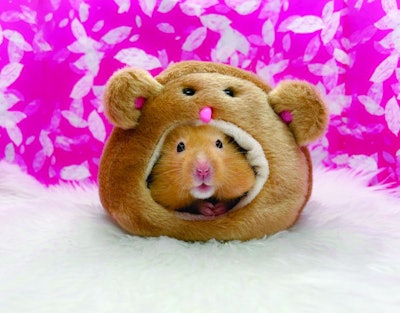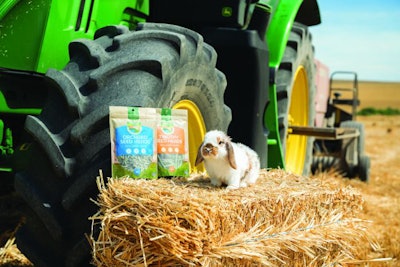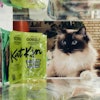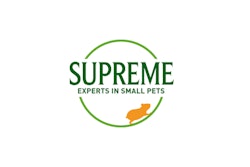
Owners of small pets (animals such as hamsters, rabbits, guinea pigs, etc.) are embracing much of the same attitudes that can be found in the dog and cat owner spaces, with a desire to give their beloved pets the best food they can find. Wrapped up in that idea are some familiar trends: premium, natural ingredients; sustainability practices; and the desire to feel like mealtime is more than just scooping some kibble (or pellets, as the case may be) into a bowl.
“As a veterinarian, I’m delighted to witness this evolution of nutrition,” said Micah Kohles, DVM, MPA, vice president of technical services and research for Oxbow Animal Health and Compana Pet Brands. “Innovation often elevates quality and we’re seeing more and more products enter the market that add meaningful value and daily enrichment to the animals for which they’re being marketed.”
‘Natural’ trend evolving in small animal pet food
Natural has been a staple trend in the pet food space for many years now and has branched out into much more nuanced ideas of what “natural” food means to a pet owner. The small pet segment is seeing this same evolution.
“Mirroring strong trends in human nutrition is the preference for ‘natural’ products containing wild or foraged ingredients,” said Claire Hamblion, marketing director of Supreme Petfoods. “Owners realize that feeding a diet that mimics natural nutrition as closely as possible is key to avoiding health problems such as weight gain, obesity and boredom. There is no better way to do this than by feeding a diet that is rich in natural ingredients.”
As in the dog and cat space, small pet owners are doing their research and coming up with nutritional demands that are more complex than ever.
“Small animal owners are becoming more educated on the products and brands that they buy for their pets,” said Kimberly Clayton, product manager at Round Lake Farm Products. “Similar to dog and cat food, we are seeing a shift in demand for all-natural options with less preservatives.”

Round Lake Farm specializes in hay, including new orchard and timothy hay seed head treats. | Courtesy Round Lake Farm Products
Sustainability in the small pet food space
Unsurprisingly, sustainability in all its facets is just as hot a topic in the small animal segment as it is in dog and cat.
“Regarding sustainability, I see a continued evolution of how products are formulated, packaged, shipped and marketed,” said Kohles. “There’s more recycled and recyclable packaging on the market than ever before, as well as products being made with sustainably sourced ingredients.”
Part of the sustainability journey involves the growing consumer desire to understand where the products they buy are coming from.
“Owners are putting more emphasis on buying from brands that are prioritizing community and environment over profits,” said Clayton.
Economic challenges loom over trends
Of course, the current economic forces at work on a global scale mean some hard choices for everyone, including pet owners, about what they’re willing (or are able) to spend their money on. While the pet industry continues to show itself as remarkably resistant to economic downturns, that doesn’t mean it’s not a consideration.
“The current financial climate is creating challenging times for us all, and good category management in the face of inflationary pressures is key to success,” said Hamblion. “So, while some customers will look for everyday great value food, others will still seek out premium brands for their four-legged family members. Offering good, better and best brands will ensure both premium and everyday customers are catered to.”
Part of easing the way through the current economic situation successfully will involve making the consumer part of the discussion.
“Making commitments to sustainability, product quality and innovation all come with increased costs, so it becomes the job of the manufacturer to help consumers see and believe in the value of an incremental investment in their pet and the world that we all share,” said Kohles. “This is certainly no small task, especially considering the current economic climate, but the opportunities are significant and, in my opinion, critical. Creating more sustainable products and processes should no longer be viewed as a novel investment; instead, it’s a responsibility and investment we all share for the health and future of the world we live in. Making a commitment to higher-quality nutrition is an investment in the health and well-being of the animals that are a part of our families.”
The future of small pet food
Given current pet ownership trends, which are seeing a boost in the way of smaller, more portable pets, it’s likely that there’s plenty of growth to be had in the small pet food world. Current and potential owners are also doing their homework, determining what’s going to be best for their animals.
“More consumers will push to become more educated on their purchases increasing the demand for all-natural and sustainable products,” said Clayton. “Technology is ever-evolving and gives consumers the ability to do their own research and not just rely on marketing to make their selection. Also, with the growth of small animals as family pets, more studies are being conducted on small animal nutrition and lifestyle and more information is readily available.”
And in a time of instability, consumers are likely to flock to brands they can count on.
“As pressure is put on finances across the board, today’s pet parents are seeking out consistent, good-quality fixed formula brands,” said Hamblion. “Adjusting recipes and substituting ingredients can help keep costs down. However, not only can cheaper ingredients mean food is less palatable, but changes in formulation can have a negative impact on delicate herbivore digestive systems. Pet parents want food that they can rely on to help support their pets live a long and healthy life.”
Research notes: Small pet trends and nutrition


















